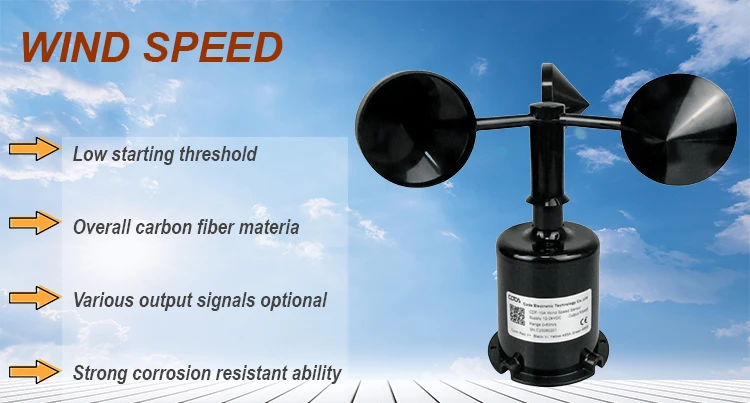
html
Wind Speed Measuring Instruments: Types and Applications
Measuring wind speed is essential in various fields, including meteorology, aviation, and environmental studies. Different instruments are designed to accurately measure wind speed, each with unique features and applications. This article explores the most common types of wind speed measuring instruments and their uses.
1. Anemometers
Anemometers are the most widely used instruments for measuring wind speed. They come in several types:
Cup Anemometers
These devices use rotating cups mounted on a vertical axis. As wind blows, the cups rotate, and the speed is calculated based on the rotation rate. Cup anemometers are commonly used in weather stations and wind energy assessments.
Vane Anemometers
Also known as propeller anemometers, these instruments use a wind vane to align with wind direction and a propeller to measure speed. They are often used in HVAC systems and industrial applications.
Hot-Wire Anemometers
These measure wind speed by detecting changes in electrical resistance caused by wind cooling a heated wire. They are highly sensitive and used in laboratory settings and microclimate studies.
2. Wind Vanes
While primarily used to measure wind direction, some advanced wind vanes incorporate speed measurement capabilities. They are essential tools in meteorological stations and sailing applications.
3. Sonic Anemometers
These high-tech instruments use ultrasonic sound waves to measure wind speed and direction. They are extremely accurate and used in atmospheric research, wind turbine control systems, and aviation weather stations.
4. Pitot Tubes
Originally developed for aircraft speed measurement, Pitot tubes can also measure wind speed by comparing static and dynamic pressure. They are used in aeronautical engineering and some industrial applications.
Applications of Wind Speed Measurement
Wind speed instruments serve critical functions in numerous sectors:
- Weather Forecasting: Essential for predicting storms and weather patterns
- Aviation: Crucial for flight safety and airport operations
- Wind Energy: Used to assess potential wind farm sites and optimize turbine performance
- Agriculture: Helps in crop management and pesticide application
- Construction: Important for crane operations and structural safety
- Sports: Used in sailing, golf, and other outdoor sports
Choosing the Right Instrument
Selecting the appropriate wind speed measuring device depends on several factors:
- Required accuracy level
- Measurement range
- Environmental conditions
- Portability needs
- Data recording requirements
- Budget constraints
Modern wind speed instruments often combine multiple measurement capabilities and may include wireless connectivity for remote monitoring. As technology advances, these devices continue to become more precise, durable, and versatile for various professional and recreational applications.
Keyword: measure wind speed instrument